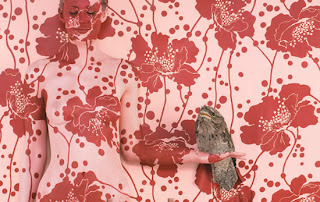Welcome to my blog! This is a my first ever blog and I plan to use it mainly as part of my studies at Bristol School of Art where I am just starting the second year of a part-time Foundation Diploma in Art and Design. The blog will be a kind of journal, recording my course work and projects, and other things I do related to my work. It will also record my research into other artists and the influence of their work on my own art. But I expect life in general will creep in too.
My creative activities until recently have been almost exclusively about quilts. I have been making patchwork quilts for years, mostly straightforward repeating geometric patterns, generally using plain colours. In the last couple of years I have been branching out, moving more towards contemporary or art quilts, but actually without much confidence in my design ability. Most of the pieces I've made recently have been small, and quite a lot have never been finished. This is in sharp contract to the years of making big bold quilts, all of which were proudly finished and well used, on beds or sofas or hanging on the walls of my house.
I belong to the Quilters' Guild and its Contemporary Quilts Group, and have signed up for the CQ Journal Quilts challenge, which requires each member to make a small quilt each month. Sometimes there is no theme, but for 2011 the quilts must each be 10" by 10" in size, and the first four had to include a circle somehow, the second four have to include text of some kind, and the last four have to include buttons. I am trying to experiment with various kinds of quilt design, and also with a whole range of techniques including painting, printing and image transfer onto fabric, dyeing and embellishment, but above all, creating my own unique designs.
It is largely to explore and enhance my limited skills in design that I wanted to take an Art Foundation course. Finding the Queens Road course in Bristol last summer was a tremendous excitement, and the first year of the course has been just as good as I hoped. I have had a chance to try out many approaches and skills including ceramics, printmaking, sculpture and 3D work, felt making, glass fusing, enamelling, pinhole photography, artists' books, as well as painting and drawing. The tutoring and the structure of the course has gently and gradually stretched my horizons and encouraged me to play and to explore in new ways. The art history lectures, and the module on conceptual art, have really changed the way I look at art and given me confidence to make my own judgements about what I see and what I like - and why I like it.
As we start the second year, it is clear that the pace is changing again. There will be far fewer group workshops and far more independent work on a couple of big projects. The resources of the college and staff will be available but it is up to us to make use of them as we see fit. This is both exciting and terrifying. But the group has built strong bonds of support and mutual respect, and I am looking forward to working alongside my fellow students as we journey onwards.
This blog will be part of my second-year submission. I have never blogged before so my posts may be somewhat basic until I get the hang of it. I am learning to keep my camera in my pocket and to take lots of photos. I have today bought a new iMac - on which I am writing this first post - and hope that this will also help me in my work and in manipulating photos simply and quickly for this blog.
I'm not expecting a large blog following - indeed any following - but at stages through the year I will perhaps let my fellow students have a peep...
So, here goes, to art, life and everything: welcome to my world.










































